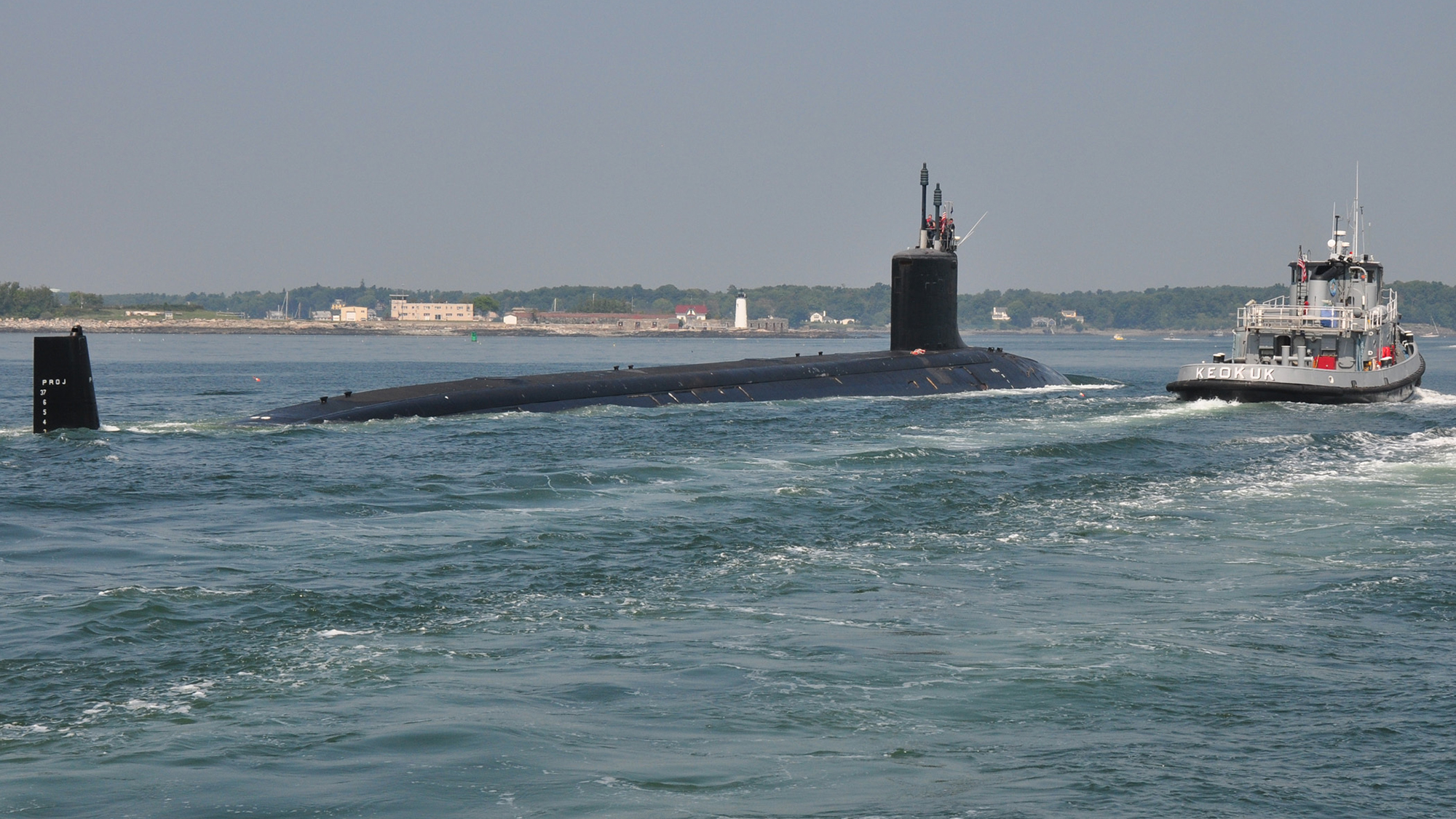

A crewed submarine is, at its most elemental level, a machine designed to preserve a bubble of air underwater and keep the rest of the ocean out. The complexities of submarine design— everything from propulsion to sensors to controls—have to be designed with this overriding purpose in mind. Because the whole of the submarine needs to maintain this careful containment at all times, what might otherwise be a nothing part, like a deck drain assembly, is crucial to the longer-term viability of the submarine. On September 25, shipbuilders General Dynamics Electric Boat, along with Huntington Ingalls Industries, announced that they had successfully used additive manufacturing, also known as 3D printing, to create a part for the Virginia-class submarine Oklahoma.
The part printed is a deck-drain, and it was manufactured on land out of copper-nickel. The part still needs some machining to refine it before it is installed, but the printing of a replacement piece is a big step forward towards easier, on-demand parts for submarine repair in the future.
“This collaborative project leverages authorizations made by the Navy that streamline requirements for low-risk additive manufacturing parts. It is possible due to the foresight and longer-term development efforts by our engineers to deploy additive manufacturing marine alloys for shipbuilding,” said Dave Bolcar in a release. Bolcar is the vice president of engineering and design at the Newport News Shipyard, the Huntington Ingalls Industries division that worked on the 3D printed part.
[Related: An exclusive look inside where nuclear subs are born]
Additive manufacturing has appeal and utility across the hobbyist, commercial, and industrial spaces for a host of reasons. The ability to rapidly prototype parts, and then produce physical approximations to refine, is useful. It’s still a major step to go from exploring a part through a printed design to a printed part being up to the task required of a completed piece.
Printing parts on land for repair allows naval suppliers to prove the technology is workable, and apply it to immediate needs.
On a ship, and on a submarine more than most other kinds of ships, every part needs to fit precisely, within set parameters so that the vessel can continue to remain watertight and airtight where it needs to be. Ships are also deeply constrained in space on board, so the availability of spare parts stockpiled for emergency or even just routine repair is finite and based on estimates before vessels embark. Onboard printers would allow repair underway, while printers at ports can ensure new parts are ready for docked vessels.

Just print it out
The Navy operates in confined spaces and on a global stage. With bases and ports scattered across the globe, managing the resupply of ships and planes means overseeing supply chains in places as far apart as Spain and Guam, and ports in-between. For the past decade, the US Navy has explored 3D printing as a way to ease that logistical load.
The premise of 3D printing is straightforward. If the raw material for many parts can be stored in undifferentiated form, and then produced as needed for repairs, that raw material and printer becomes far more flexible than having already assembled pieces stockpiled. Printers can produce errors in manufacturing, so the Navy has spent years working on how to create stuff with a minimum of error.
“We’re at the front end of this. There are parts that require airworthiness for approval and the non-air worthiness, the non-airworthiness are easier to do,” Lieutenant General Steven Rudder of the Marine Corps told USNI News in 2018. “You’re going to see additive manufacturing, both in industry and in our FRC’s [Fleet Readiness Center]. The Air Force is ahead of us on metal printing; you’re going to see that really take off. That’s just at the beginning of stages.”
The Navy also explored not just having 3D printers at ports of call, but also having printers onboard ships, ready to print spare parts while under way.
In 2021, the Navy tested a large, almost room-sized, 3D printer from Xerox, which could create parts in aluminum at a base on land. In 2022, the Navy also installed an identical printer on board the USS Essex, a ship that in any other navy would count as a full-sized aircraft carrier, but for the US is classified as a Landing Helicopter Dock. The parallel trials of printers at sea and on land was to see if the conditions of being on the ocean, with the humidity and rocking waves, would produce different results than the same parts made on land. (Xerox ultimately sold its 3D printing division to another company in the additive manufacturing space.)
When it comes to printing parts for the submarine, space is already at a premium, even more so than on a surface vessel. Making the drain parts by additive manufacturing shows that, while submarines may not be able to print their own parts, the small, mundane yet vital pieces needed for ship operation can still be made to order. Every part of a ship seems mundane until it doesn’t work and needs to be replaced, and then suddenly it becomes crucial.
